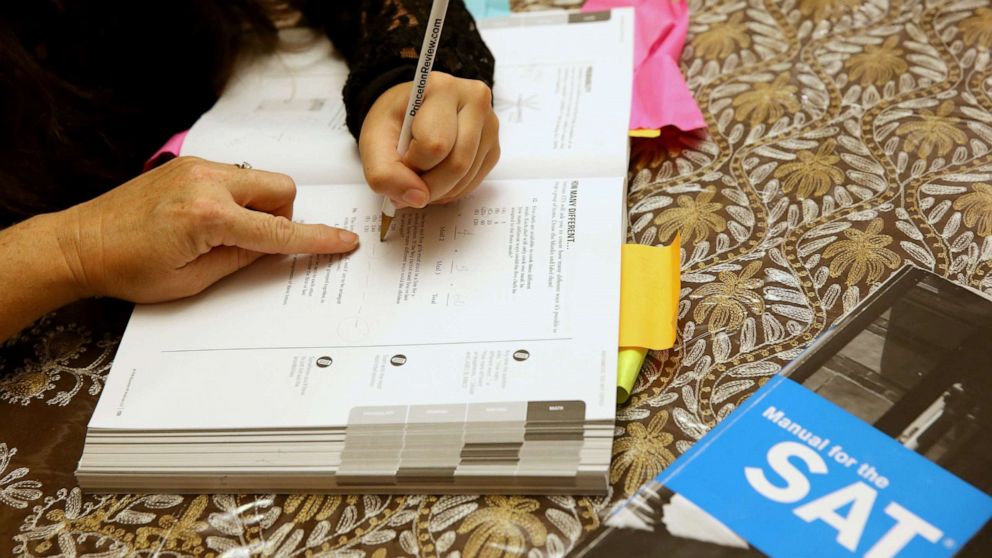
Students filing into a building, armed with No. 2 pencils, to take the SAT, the standardized test that could determine their futures, will soon be a thing of the past.
Starting in 2024, the SAT will be taken exclusively on a computer, the College Board announced Tuesday.
In addition to the test moving online, it will also be shorter, cut down from three hours to two hours, and will feature shorter reading passages that "reflect a wider range of topics," according to the College Board.
Students will also be able to use calculators for the test's entire math section.
“The digital SAT will be easier to take, easier to give, and more relevant,” Priscilla Rodriguez, the College Board's vice president of College Readiness Assessments, said in a statement. “We’re not simply putting the current SAT on a digital platform—we’re taking full advantage of what delivering an assessment digitally makes possible. With input from educators and students, we are adapting to ensure we continue to meet their evolving needs.”
Moving the test online will also shorten the time that students have to wait to hear how they did, with tests scores now being returned in days versus weeks.
The College Board tested administering the SAT digitally last November as part of a pilot project.
According to the organization, 80% of students reported they found the digital test to be less stressful than taking the test in-person, which was previously the only option.
MORE: How coronavirus is impacting SAT and other standardized testingThe online SAT will begin next year internationally and in the United States in 2024.
Students will be able to use their own laptop or tablet to take the test, or use a school-issued device. The College Board said it will provide a device for students who do not have one on test day.
MORE: Student is 1st Black male valedictorian in school's 106-year historyThe SAT, along with its competitor, the ACT, has for decades been a required part of the college admissions process.
That has changed more recently with more and more colleges choosing to go test-optional, meaning they allow the student to decide whether or not to submit SAT or ACT scores with their application.
In addition to individual colleges and universities making the decision, states including Iowa, Colorado, Illinois and Montana have also required their state colleges to be test-optional, according to Inside Higher Ed, an education-focused news publication.
The College Board said it recognized the optional focus currently in higher education when making the changes to the SAT.
“In a largely test-optional world, the SAT is a lower-stakes test in college admissions. Submitting a score is optional for every type of college, and we want the SAT to be the best possible option for students," Rodriguez said in a statement. "The SAT allows every student—regardless of where they go to high school—to be seen and to access opportunities that will shape their lives and careers."